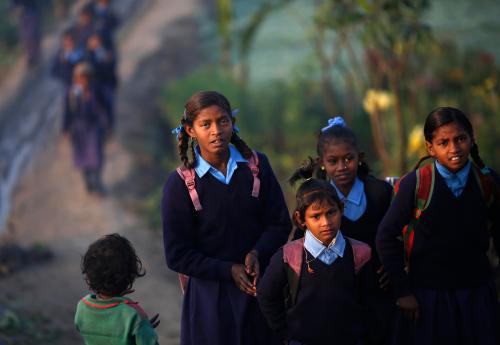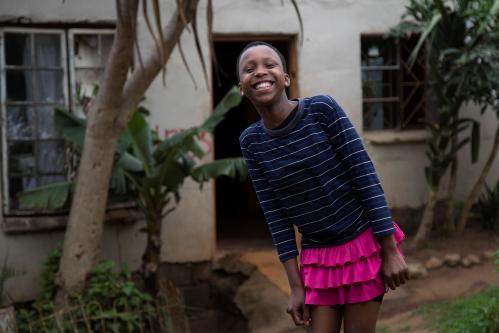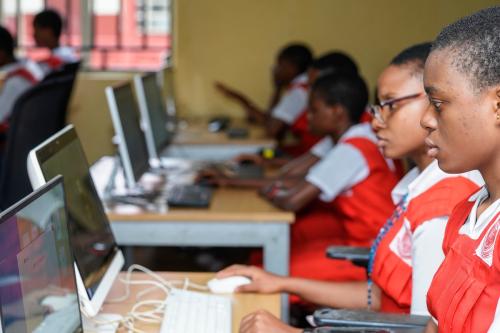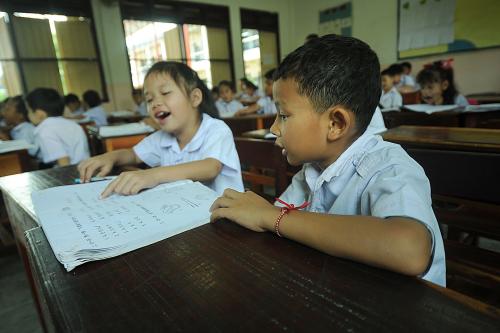“This is about governments using data for performance rather than compliance” was a resounding message coming out of the U.S. Department of Education’s conference on June 10 on the use of Pay for Success contracts in education. These contracts, known globally as social impact bonds, continue to be at the forefront of global conversations about results-based financing mechanisms, and have garnered significant momentum this week with passage of the Social Impact Partnerships for Pay for Results Act in the U.S. While limitations certainly exist, their potential to revolutionize the way we fund social projects is tremendous.
A social impact bond (SIB) is a set of contracts where a government agency agrees to pay for service outputs or outcomes, rather than funding defined service inputs, and an investor provides upfront risk capital to the service provider. The investor is potentially repaid principal and interest contingent on the achievement of the predetermined outputs or outcomes.
In our research on impact bonds at the Center for Universal Education, we have analyzed the use of SIBs for education in the U.S., other high-income countries, and low- and middle-income countries. Practitioners in each of these contexts are having far more similar conversations than they may realize—all are united in their emphasis on using SIBs to build data systems for performance. There is tremendous potential for lessons learned across these experiences and across the broader discussions of results-based financing mechanisms for education globally.
Current SIBs for education globally
There are currently five SIBs for education worldwide: two in the U.S. for preschool education, one in Portugal for computer science classes in primary school, and one each in Canada and Israel for higher education. In addition, a number of countries have used the SIB model to finance interventions to promote both education and employment outcomes for teens—there are 21 such SIBs in the U.K., three in the Netherlands, and one in Germany. There is also a Development Impact Bond (DIB), where a donor rather than government agency serves as the outcome funder, for girls’ education in India. The Center for Universal Education will host a webinar to present the enrollment and learning outcomes of the first year of the DIB on July 5 (register to join here).
U.S. activities to facilitate the use of SIBs for education
At the June 10 conference at the Department of Education, the secretary of education and the deputy assistant to the president for education said that they saw the greatest potential contribution of SIBs in helping to scale what works to promote education outcomes and in broadening the array of partners involved in improving the education system. Others pointed out the value of the mechanism to coordinate services based on the needs of each student, rather than a multitude of separately funded services engaging the student individually. In addition to using data to coordinate services for an individual, participants emphasized that SIBs can facilitate a shift away from using data to measure compliance, to using data to provide performance feedback loops.
The interest in data for performance rather than compliance is part of a larger shift across the U.S. education sector, represented by the replacement of the strict compliance standards in the No Child Left Behind Act of 2002 with the new federal education funding law, the Every Student Succeeds Act, signed into law in December of 2015. The law allows for federal outcome funding for SIBs in education for the first time, specifically for student support and academic enrichment programs. The recently passed Social Impact Partnerships for Pay for Results Act also allows for outcome funding for education outcomes. The Department of Education conference explored potential applications of SIBs across the education sector, including for early home visiting programs, programs to encourage completion of higher education programs, and career and technical education. The conference also analyzed the potential to use SIBs for programs that support specific disadvantaged populations, such as dual language learners in early education, children of incarcerated individuals, children involved in both the child protection and criminal justice systems, and Native American youth. Overall, there was a focus on areas where the U.S. is spending a great deal on remediation (such as early emergency room visits) and on particular levers to overcome persistent obstacles to student success (such as parent engagement).
To help move the sector forward, the Department of Education announced three new competitions for feasibility study funding for early learning broadly, dual language learners in early education, and technical education. The department is also facilitating connections between existing evaluation and data system development efforts and teams designing SIBs. The focus on early childhood development by the Department of Education is reflective of the national field as a whole: Programming in the early years is becoming a particularly fast-growing sector for SIBs in the U.S. with over 40 SIBs feasibility and design stages.
SIBs for education in low- and middle-income countries
There is only one DIB for education in low- and middle-income countries; however, there are a number of SIBs and DIBs for education in design and prelaunch phases. In particular, the Western Cape Province of South Africa has committed outcome funding for three SIBs across a range of health and development outcomes for children ages 0 to 5.
Though the number of impact bonds may be relatively small, a significant amount of work has been done in the last 15 years in results-based financing for education. The U.K. Department for International Development (DfID), the Dutch Ministry of Foreign Affairs, the Asian Development Bank, the World Bank, the Global Partnership for Output-Based Aid, and Cordaid had together funded 24 results-based financing initiatives for education as of 2015. Of particular interest, DfID is funding results-based financing projects through a Girls Education Challenge and the World Bank launched a new trust fund for results-based financing in education in 2015. As with impact bonds in the U.S., a primary aim of results-based financing for education in low- and middle-income countries is to strengthen data and performance systems. Early childhood development programs and technical and vocational and training programs have also been identified as sub-sectors of high potential. Here are a few final takeaways for those working on results-based financing for education in low- and middle-income countries from the U.S. Department of Education conference:
- The differences between the No Child Left Behind Act and the Every Student Succeeds Act should be analyzed carefully to ensure other data-driven education performance management systems promote both accountability and flexibility.
- In building data systems through results-based financing, ensure services can be coordinated around the individual, feedback loops are available for providers, and data on early education, child welfare, parent engagement, and criminal justice involvement are also incorporated.
- There are potential lessons to be learned from the U.S. Department of Education’s effort to conduct more low-cost randomized control trials in education and the U.S. Census Bureau’s data integration efforts.
- SIBs provide an opportunity to work across agencies or levels of government in education, which could be particularly fruitful in both low- and middle-income countries and the U.S.
As the global appetite for results-based financing continues to grow and new social and development impact bonds are implemented throughout the world, we’ll have an opportunity to learn the true potential of such financing models.






Commentary
Paying for success in education: Comparing opportunities in the United States and globally
June 24, 2016